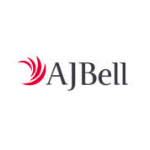Understanding the tax rules for ISAs
There’s no doubt that the tax advantages of ISAs make them a compelling proposition for savers and investors. And you’re still in good time to open an ISA for this tax year. It will help you decide between the different products available if you understand the basic rules of their tax structures.
What IS an ISA?
Put simply, Individual Savings Accounts (ISAs) are accounts you never pay tax on. They’re offered by banks, building societies, asset managers and the government-backed National Savings & Investments (NS&I).
The interest you earn doesn’t count towards your Personal Savings Allowance, so if it’s possible you could be earning a lot of interest, you can protect more of it in an ISA.
ISA earnings can range from 0.65% on an instant-access cash ISA that can be opened with just a £1 deposit, to 8% in a “structured deposit plan” cash ISA or up to 14.51% on a “structured investment plan” stocks and shares ISA.
Limits to how much you can put away
Accumulating those earnings tax-free is a considerable benefit, so there’s a limit to how much you can save or invest in a tax-free ISA “wrapper” each year: from the 2017/18 tax year the limit has been £20,000 a year.
You must save or invest before the end of each tax year on 5 April to get the tax-free benefit. And you can’t roll over any unused allowance to the following year.
So if you only put £12,000 into an ISA (or more than one type of ISA) in one year, the following year you can still only save or invest a maximum of £20,000 into ISAs – not £28,000.
Transfer to maximise earnings
If you want to transfer the balance out of an old ISA account into a higher-paying account, it won’t be counted as part of your current year’s ISA allowance.
Be sure to transfer the balance: don’t withdraw it in cash and then pay it in or you’ll be taking it out of its ISA wrapper and it will be counted as part of your annual £20,000 allowance (unless you have a “flexible” ISA). Instruct your new provider to transfer it over.
An administrative bonus: PAYE taxpayers still don’t have to fill out an annual tax return for their ISAs.
There are five types of ISAs:
Cash ISAs and Help to Buy ISAs
Cash ISAs
- You must be 16 or over to open a Cash ISA.
- Cash ISAs can be Instant Access, Regular Savings or Fixed-Rate.
- Some of the rates on old Cash ISAs don’t compare well with the current best buys so you’d be advised to check the rates and transfer your balance to a new account with a higher rate. But be sure to get your new provider to do the transfer to keep it ISA-compliant.
Help to Buy ISAs
These were launched in December 2015 and are for first-time buyers only. They are a type of Cash ISA so you usually can’t hold both in the same tax year, but some providers do offer a “split ISA” package.
- The maximum savings limit for Help to Buy ISA each year is lower: you can save £1,200 in the first month and up to £200 every month after that (= maximum £3,400 in the first year, £2,400 each year after that).
- The big advantage of the Help to Buy ISA is that the government will add 25% to your savings – to a maximum of £3,000. So if after four and a half years you’ve saved the maximum the government will match – £12,000 – you will have £15,000 for your home deposit.
- Your last chance to open this kind of ISA is 30 November 2019, and the government will pay out the bonuses until December 2030.
Junior ISAs
One Junior ISA per child can be opened by anyone who has parental responsibility for a child under the age of 18.
- The maximum contribution limit (2018/19) is £4,260.
- The money is tax-free until they turn 18: they can then withdraw it or transfer it to an adult ISA.
Stocks and Shares ISAs
You must be 18 or over to open an Investment (or Stocks and Shares) ISA.
Making your investments within an ISA “wrapper” has three tax advantages:
- No tax on profits: outside of an ISA, any profits above your annual capital gains tax allowance (£11,700 for 2018/19) are taxed at 18% for basic-rate taxpayers, and 28% for higher-rate taxpayers.
- No tax on interest earned on bonds
- No tax on dividend income: outside of an ISA , any dividends above your £5,000 annual dividend allowance are taxed at 25% for higher-rate taxpayers, and at 30.56% for additional-rate taxpayers.
Invest in a Stocks and Shares ISA
Innovative Finance ISAs
You must be 18 or over to open a Peer to Peer (or Innovative Finance) ISA.
- Peer to Peer ISAs can be riskier than Cash ISAs, but give you a chance to do peer-to-peer lending, lending to businesses and crowdfunding within a tax-free ISA wrapper.
Invest in an Innovative Finance ISA
Lifetime ISAs
You must be over 18 but under 40 to open a Lifetime ISA (LISA).
- You can save up to £4,000 a year in a LISA and the government will add 25% on top.
- The bonus is paid once you reach the age of 50, and is paid monthly, and you’re paid interest on it.
Tags





